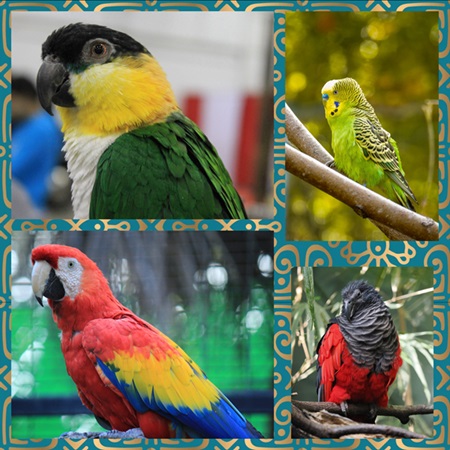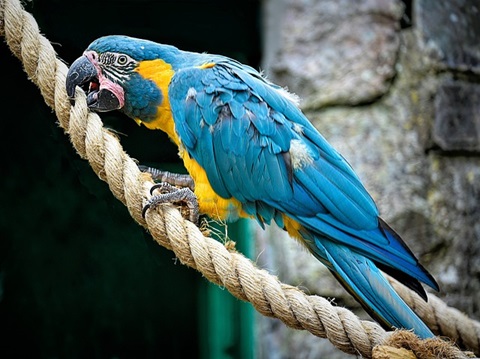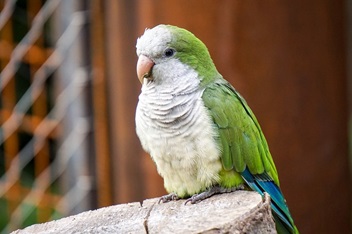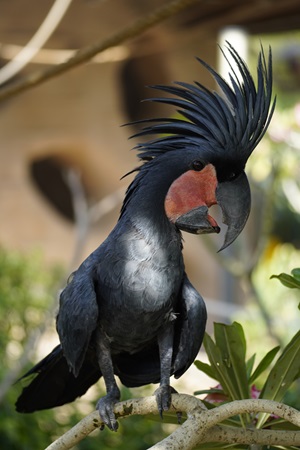
The Psittaciformes, commonly known as parrots, are a vibrant and diverse order of birds that captivate with their striking colors, playful personalities, and remarkable vocal abilities. From the tiny Budgerigar(Melopsittacus undulatus) to the majestic macaw, these feathered companions have fascinated humans for centuries, earning a place in our hearts and homes.

A Global Presence:
Psittaciformes are found in tropical and subtropical regions around the world, with the highest concentration in South America, Australia, and Africa. Their adaptability has allowed them to thrive in a variety of habitats, including rainforests, woodlands, grasslands, and even urban environments.
Distinctive Features:
The order Psittaciformes is easily recognizable by a set of defining characteristics:
Powerful Beaks: Their strong, hooked beaks are essential for cracking seeds, nuts, and fruits, as well as for climbing and manipulating objects.
Zygodactyl Feet: Most species have zygodactyl feet, meaning two toes point forward and two point backward, providing an excellent grip for perching and climbing.
Vibrant Plumage: Parrots are renowned for their stunning array of colours, ranging from vivid greens and blues to bright reds and yellows. This vibrant plumage plays a role in courtship displays and species identification.
Vocal Mimicry: Parrots are known for their impressive ability to mimic sounds, including human speech. This vocal mimicry is believed to be linked to their complex social structures and communication needs.

Ecology And Behavior:
Psittaciformes exhibit a wide range of behaviours depending on the species. Many are social birds, living in flocks and communicating through calls and body language. Their diets primarily consist of seeds, fruits, nuts, and nectar, though some species also consume insects and other small creatures.
Their role in their ecosystems is significant, acting as seed dispersers and playing a role in maintaining plant diversity. However, many parrot species are facing threats due to habitat loss, the illegal pet trade, and the impact of climate change.

Conservation And Human Interaction:
The popularity of parrots as pets has unfortunately led to widespread poaching and habitat destruction. Conservation efforts are crucial to protect these beautiful birds and ensure their survival for future generations.
These Efforts Include:
Habitat Protection: Preserving and restoring natural habitats is vital for parrot populations.
Combating Illegal Trade: Stricter regulations and enforcement are needed to curb the illegal trade in parrots.
Education And Awareness: Raising awareness about the importance of parrot conservation and the threats they face is essential.
Conclusion:
The order Psittaciformes represents a fascinating and important group of birds. Their captivating appearance, remarkable intelligence, and complex social behaviors make them a subject of ongoing scientific study and admiration. By actively working towards their conservation, we can ensure that these vibrant creatures continue to grace our planet for generations to come.
